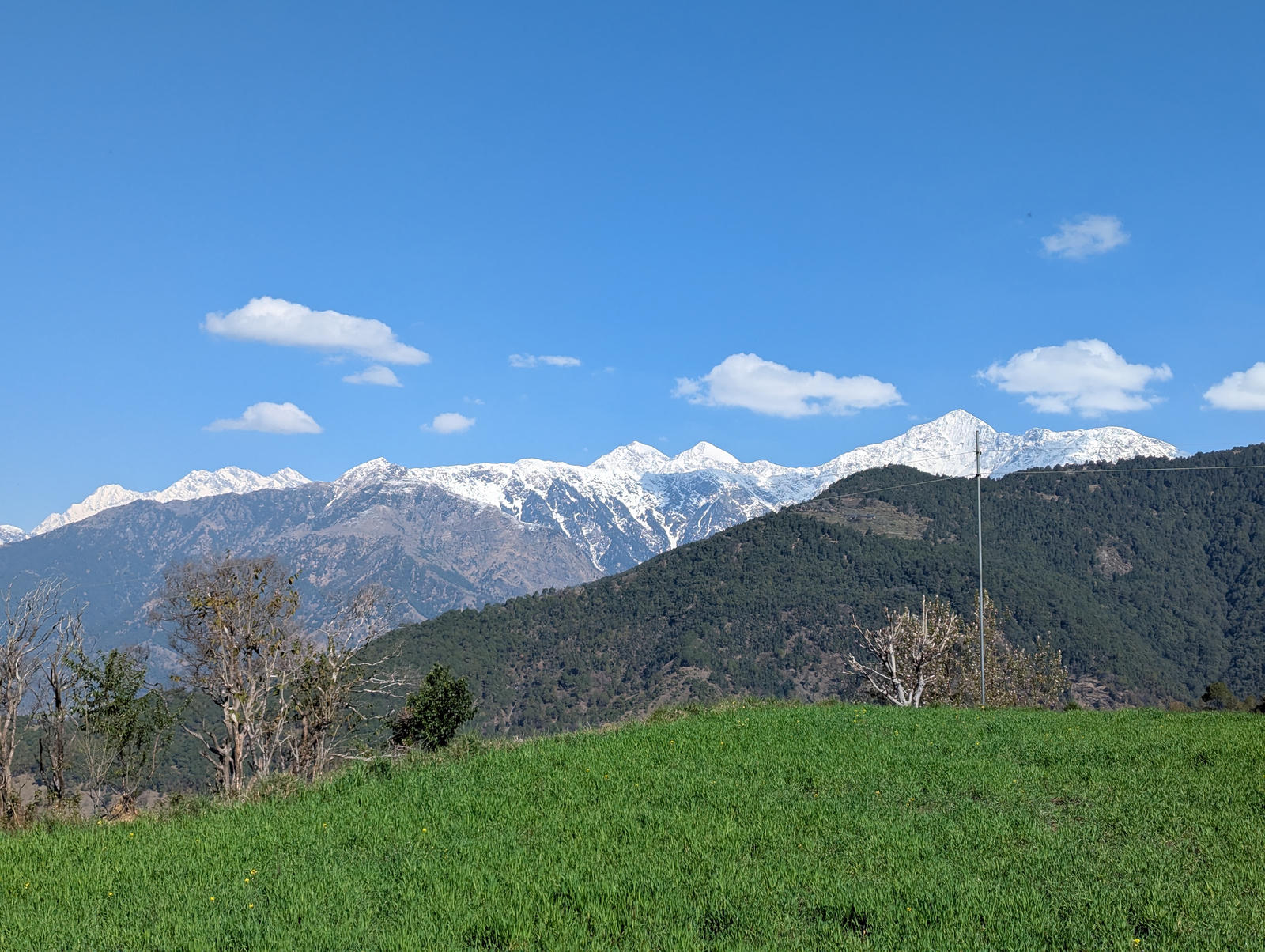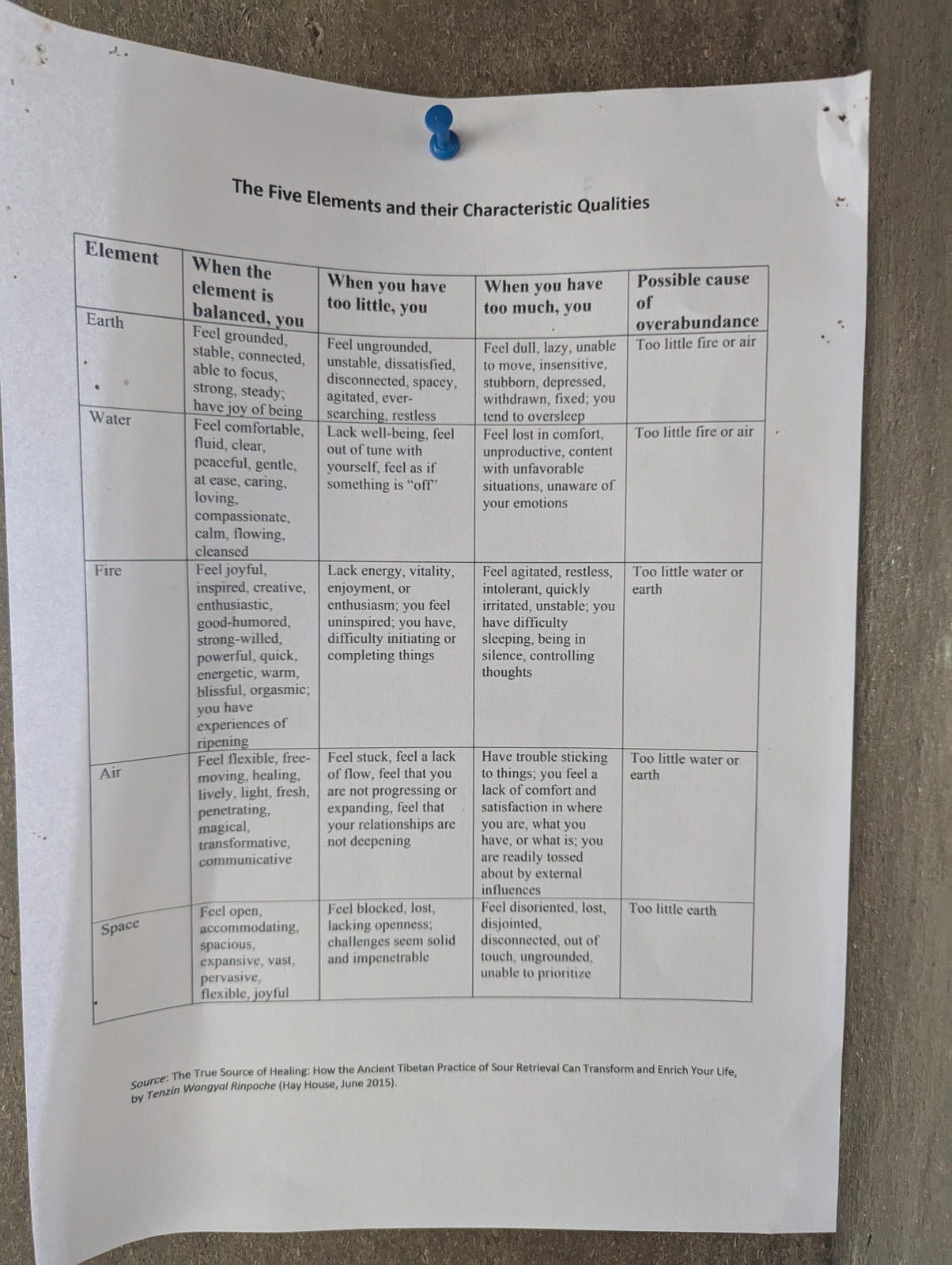Dharmalaya - A Dysfunctional Institute

Dharmalaya is 6-acre eco-campus located near a village in Bir, Himachal Pradesh. The institute is intentioned as an alternate school with their main focus being on contemplative arts and teachings of the traditional practises of natural building and agriculture in-addition to now integrating that with permaculture principles.
I visited the institute for a 3-month permaculture course led by an Australian Permaculture teacher Robyn Hewson. The course itself was quite helpful and enriching however here I will be focusing on sharing my experience with the community and how it was staying within the campus of Dharmalaya for an extended period of time.
🔗 Community
Never before have I been in a community so distraught, fractured and scattered. So many lost and jaded humans, trying to find a sense of purpose, respect and self-worth by trying to help others and building a “better world”. However it all comes from a place of a moral high-ground, a sense of lack and neediness. Rather instead an overflowing of abundance and love.
The campus is completely isolated, with a lack of collaboration with the outside world. The incentives for people staying in and volunteering long-term are also misaligned. With them having to pay for their lodging and food while working on the garden beds, providing labour for the natural build constructions or just doing logistics around the workshops, setting up for the new people coming in and administering the daily needs and chores of the community.
There are some elements to the community that are inspiring, especially how they have the local native villagers integrated and a part of the workings of Dharmalaya. All of them work full time as staff; helping out with the maintenance of the buildings with regular plastering work, tending to the garden beds, planting and growing annuals, growing and caring after many of the native trees within the land, cooking 3 meals a day in the Kitchen.
Some of the Buddhist cultural influences from the town of Bir, can be seen and felt within the campus and the way the teachings here are imparted. Like the “Short Times, Many Times” practise by Yongey Mingyur Rinpoche of meditating for even just 2 minutes before starting every circle.
🔗 Spiritual Materialism
One of the founder of Dharmalaya, Mai-Linh seems to be a spiritual healer of sorts, having practised Buddhist philosophy and teachings, she has made a career out of it.
Undoubtedly, she held a few online sessions with us while I was there, talking and sharing a Buddhist technique of connecting with the five elements. Many of these teachings in various spiritual and traditional lineages are secret and are only passed down when the disciple is ready. Additionally, they are not taught by just anyone and most definitely not in a generalised and abstract way.
Unsurprisingly it caused more confusion than help anyone while we were there. For me it was highly intellectualized and just stories created around the five elements, no matter how many times she told us to “just experience it” and not think.
This really made me think of “Spiritual Materialism” as popularized by Chogyam Trungpa Rinpoche as a trick of the ego. Using the nature, elements and eventually spiritually as a way of enhancing our ego, not really coming any closer to truth and reality.
A glimpse of her approach can be inferred from this text she shared with us after many people requested more information to understand the teachings.

🔗 Natural Building and Didi Contractor
Didi Contractor was a self-taught German-American architect known for her natural building designs, many of which are seen in the living spaces at Dharmalaya.
As soon as you enter the campus and spend some time in the Main Building, you’ll see her portrait hanging on a wall, adorned with flowers and incense. A book written on her life by one of her apprentices is visibly kept in a common space for anyone to read and eventually buy a copy for themselves; there are always a few in stock at Dharmalaya.
There’s a fanaticism around Didi Contractor at Dharmalaya, as if she were a pioneer or the greatest architect in the world. Yet, she primarily brought back traditional building methods that had been used in India for generations but had lost their appeal due to Western cultural influences.
This isn’t surprising in India, where a foreigner is often given more respect and value than an Indian in their own land for the same ideas. It’s no wonder then that a Westerner had to start preaching about the values of natural buildings for people to start paying attention. Of course, she could explain the benefits in English, combining them with modern architecture principles and Vastu Shastra—the ancient science of architecture from Hindu Vedic Texts.
Imagine an amateur self-taught Indian telling you to build your house with mud and the often considered superstitious science of Vastu—such a suggestion might be dismissed outright!
The fanaticism hasn’t stopped after she passed away, though. Even today, her quotes like “The best building is no building” are chanted and taken too literally by budding architects and professionals.
If you happen to be part of a Natural Design and Contemplative Architecture course at Dharmalaya, know that it’s quite unlikely you will get to build a structure or a building at the site unless it’s heavily influenced by Didi’s previous designs. One of the reasons you’ll hear for this is that the largest flat patch of land, the camp grounds, has an energy of its own. It’s a community space where people often come together to play, chat, and contemplate. Building anything there, they say, would only dissipate the energy and in no way enhance or preserve its essence.
Being a Natural Building or Didi Contractor fanatic can’t be the worst thing, right? Well, the thing about fanaticism is that it often appeals to those who are less grounded. In my conversations with one of the local villagers who has been working at Dharmalaya for over 10 years, I came across a surprising story. Hariyali Didi, who has built multiple mud houses and learned the methods from her grandfathers, says she herself has built her most recent house with cement and burnt bricks.
In her own words:
“Cement buildings are all the trend now.” – Hariyali Devi
So, Dharmalaya and all its fanaticism haven’t done much good if the people working there themselves don’t see and understand the benefits of Natural Buildings, no matter what the prevailing cultural trend is.
🔗 Founders
Mark Moore and Mai-Linh are the two main co-founders of Dharmalaya. However, they’ve both stepped back from their roles in stewarding the institute and no longer stay at the campus to actively grow and thrive with the community.
I see this in many communities: once led purely by the founders’ vision and drive, they’re left in a void and chaos, having to reorganize and self-govern without the continued guidance and vision of the founding members, whether the founders step back voluntarily or due to other circumstances.
What’s often overlooked by these communities and their founders is this path of natural succession. How does a community grow and evolve with a completely or even a partially non-overlapping shift of community members? Often, there’s no governance system in place. While hierarchy is often the most optimal and efficient organizational structure in human society at a small scale, many altruistic and well-intentioned founders see it as a point of failure, lacking redundancy.
However, going straight from a hierarchy to a flat organizational model simply does not work. I don’t see myself visiting Dharmalaya again, but I do know how it feels to be in a dysfunctional community now.